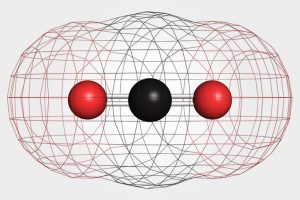Researchers from K. N. Toosi University of Technology (Iran), in collaboration with teams from Peking University, the China University of Geosciences, and other international research institutes, have conducted a comprehensive study on carbon dioxide (CO₂) absorption in hexadecane.
According to the Report, this research aims to advance subsurface CO₂ storage and the development of CO₂-based enhanced oil recovery (CO₂-EOR) methods. Using Raman spectroscopy and hybrid Monte Carlo/molecular mechanics simulations, the team investigated the effects of pressure and temperature on CO₂ solubility in hexadecane. The results revealed that increasing temperature reduces solubility, while higher pressure enhances it. These findings could help refine predictive models and AI-based systems for hydrocarbon resource management and carbon storage, an important step toward mitigating climate change and optimizing fossil energy extraction.
With rising energy demand and growing environmental concerns, CO₂ storage and enhanced oil recovery have become crucial areas of research. Understanding how CO₂ behaves in heavy hydrocarbons such as hexadecane is essential for both scientific and industrial applications. Studying CO₂ dissolution in hexadecane under varying pressure and temperature provides critical insights for designing subsurface storage and oil recovery processes.
To address this challenge, the K. N. Toosi University research team, along with collaborators from Peking University, the China University of Geosciences, and other institutions, measured CO₂ solubility in hexadecane within a temperature range of 25–200°C and a pressure range of 1–15 MPa using Raman spectroscopy. In the experiments, standard samples of hexadecane and CO₂ were mixed in capillary silica glass, and after reaching equilibrium, Raman spectra were recorded to determine the correlation between the mole fraction of CO₂ and the intensity ratio of Raman peaks.
Experimental data indicated that CO₂ solubility decreases with increasing temperature and increases with pressure, highlighting the importance of precise control over these parameters in industrial and subsurface applications. In addition to the experimental work, Grand Canonical Monte Carlo/Molecular Dynamics (GCMC/MD) simulations were used to analyze hexadecane swelling and the movement of CO₂ molecules within the alkane matrix. The simulation results closely matched the Raman data and previous models, confirming the reliability of the findings.
The study demonstrated that volume changes play a critical role in solubility calculations and should be incorporated into predictive models to enhance the accuracy of CO₂ behavior forecasting. Simulations also revealed that the effect of pressure on CO₂ diffusivity is less significant than that of temperature and that CO₂ interacts more strongly with methyl (CH₃) groups than with methylene (CH₂) groups in hexadecane due to greater accessibility for molecular interactions.
Beyond providing valuable in-situ measurement tools, this research contributes to the development of AI and machine learning models for more accurate prediction of CO₂ behavior in subsurface heavy oils. From an applied perspective, the findings represent an important step forward in CO₂-EOR technology and subsurface carbon storage, with potential to reduce the impacts of climate change and enable more efficient energy resource management.
This study serves as a successful example of international scientific collaboration, illustrating how the integration of experimental techniques and molecular simulations can yield deep insights into complex physical processes. The project’s results also pave the way for future research on other solvents, hydrocarbons, and greenhouse gases.
Ultimately, the research emphasizes that considering volumetric changes and molecular interactions is vital for improving the accuracy of predictive models. The molecular simulation data provide a powerful foundation for enhancing energy efficiency and optimizing subsurface resource management.


